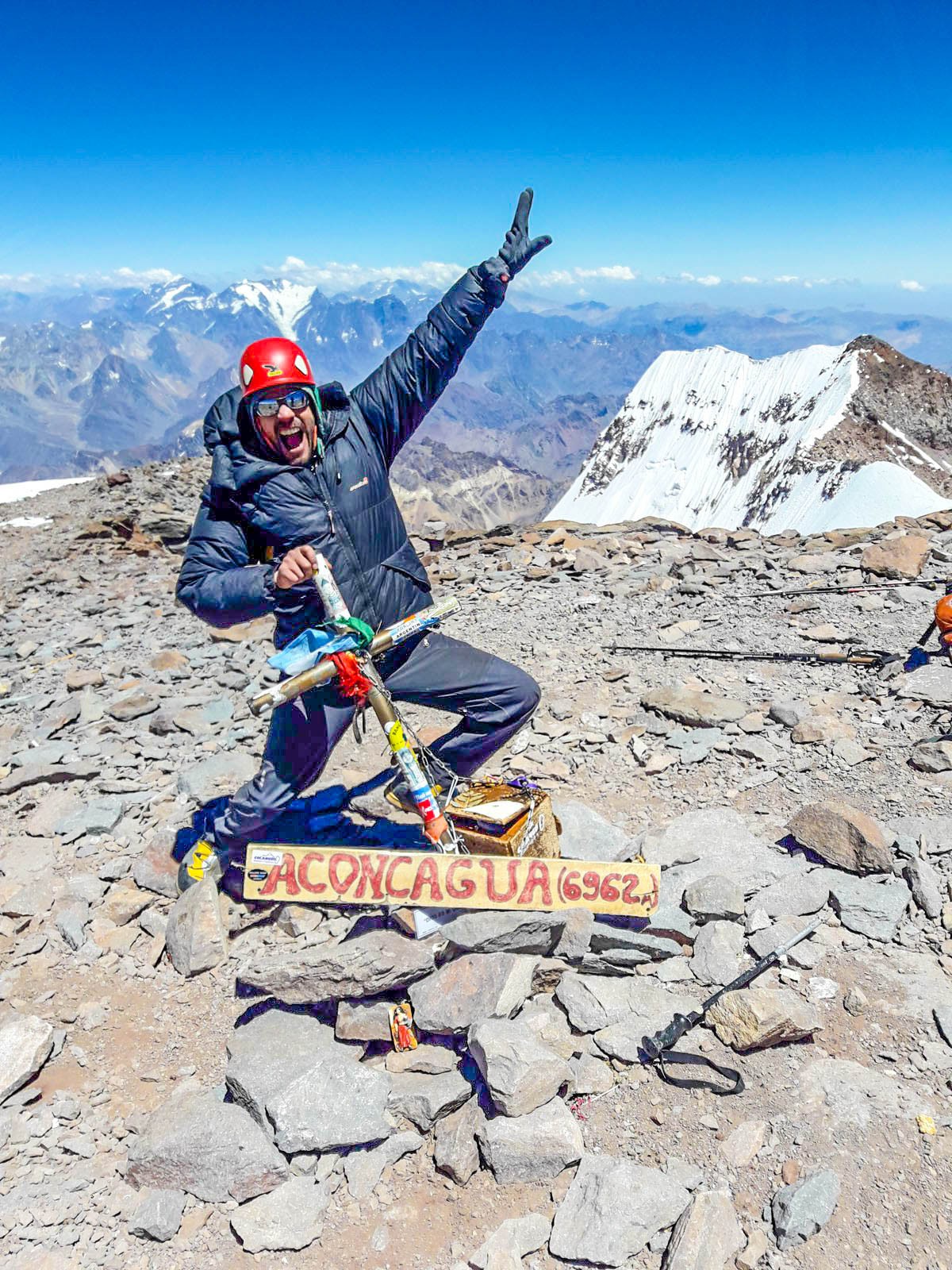 Being able to imagine and see in our future a goal that keeps us on our toes in the period that lasts the whole process, represents one of the most powerful and energizing sensations that we can have in life. The mere fact of creating and dreaming of being able to achieve and accomplish something that makes us happy for an indefinite period is the gift that we need to give ourselves year after year. The representativeness of motivation is one of the most important engines.
Being able to imagine and see in our future a goal that keeps us on our toes in the period that lasts the whole process, represents one of the most powerful and energizing sensations that we can have in life. The mere fact of creating and dreaming of being able to achieve and accomplish something that makes us happy for an indefinite period is the gift that we need to give ourselves year after year. The representativeness of motivation is one of the most important engines.
Within the framework of "dreams to be fulfilled" and in the last 30 years, the human being has found in mountaineering an infallible tool when it comes to finding intense feelings that feed values ??such as self-improvement, discipline, enthusiasm and confidence, among others.
Climbing a great mountain can mean the magical entrance to this select group of Dreams to Fulfill. Aconcagua is the highest mountain in America, in the Southern Hemisphere and in the Western Hemisphere and, beyond these merely numerical and statistical descriptions that also reaches the 7000 meters of height above sea level, this prominent elevation keeps an endless number of wonderful landscapes and stories that can become part of one of the most representative and unforgettable paragraphs of our life. Do you want to get to know it? Do you want to prepare to live it? Do you want to light up your enthusiasm again? Do you want to rise to a challenge that will mark you forever? I present you stages, moments, keys or simply points that can collaborate and definitively clarify the way in the previous steps to arrive at the day in which you find yourself delivering the ascension permit in the Horcones or Punta de Vacas section; there, in the genesis of your dream expedition.
- 1- Add experience in the mountains
Many times people has approached me on the guided tours, or even at the sales office, telling me that they wanted to climb the Aconcagua summit without previous experience. Let's pigeonhole the term "No Previous Experience" as someone who has never ascended a mountain more than 4000 meters high. Although we can also mention the "Without Any Experience"; In this case, we are talking about people who have not even gone on a two-day trek through the mountains of Córdoba.
Although it is a very high mountain and this brings the acclimatization section to the height, strictly speaking the ascent is not technically complex (the terrain). In short, let's say that you don't have to climb with your hands, something that the most curious of the least experienced ask us about a lot.
It is always important to have some experience in having ever been in the mountains, although the most important thing first is to walk on different terrains with loose stones like hauling, before forcing yourself to go to the height. First the basics, putting on a backpack and trekking for two or more days, then moving on to altitude climbing. Perhaps some will reach it with a couple of trekks, perhaps others need some more and perhaps some privileged (never recommended) can ascend to the Colossus of America without ever having trekked to Sierra de la Ventana in their life.
Can you get the necessary experience in a year or a few months of preparation? Yes and No. Something is always better than nothing, so the recommended thing is to go to the mountain as many times as possible, and with guides and / or specialized companies the process and experience will be better and more controlled.
2- Physical and technical training
One of the keys to mountain success always has to do with being physically well. We just mentioned the technical thing in the previous point, which trains on the field and not at home or in the park or in the gym.
After several experiences lived in the preparation of large expeditions and, as my own experience, I can recommend a system that in general lines is well adapted to anyone who has a basic level of physical-mental training. The idea is to be able to do a personalized follow-up, with a chart, where we can register the process of each one of the areas worked: aerobic, power or specific training in exercises, backpack work, the technician and the training carried out specifically on the ground (trip to the mountain). The system is designed in a pyramid way, starting with low demand until reaching the highest point and sustained for three months, finally descending again and ending with 10 to 12 days of complete rest, where priority is given to eating and hydrating well. 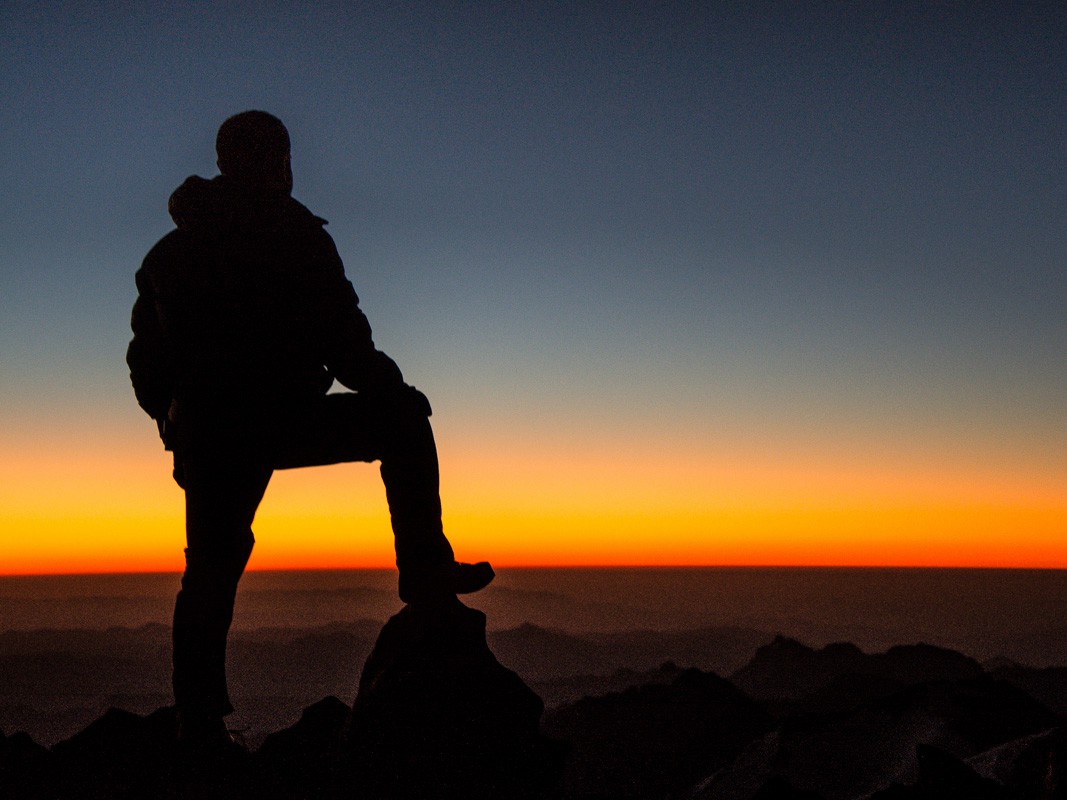
Aerobic: We can define it as the activity that makes us work the cardiovascular resistance and that makes us reach the limit on the lung capacity, high pulsations in a prolonged period of not less than 30 continuous minutes. Examples: running, swimming, cycling.
Power-strength: Exercises that give us concrete work on some sectors of the body, basically working on power and muscular endurance (calves, thighs, arms, etc.). Ex: Gym, crossfit or isolated and specific exercises such as squats, burpees, mountain climbers, abdominals, spinals, push-ups and others.
Backpack: Training carrying expedition backpack is always positive. It is advisable to start with not less than 7 kg + the weight of the backpack, but the most important thing is to know how to adjust the straps well and that it is the right size. A backpack is not the same for a woman who weighs less than 50 kg and measures 1.60 as for a man of 85 kg and 1.80, remember that it is very important to get backpacks for eachone's body. These exercises can be done on stairs or ravines.
Technical: we can include here everything related to the terrain, how to walk on an unstable slope, with loose stones such as scree, with snow or ice, with stretches of rock or with exposed edges. Also work with the balance of the body. This will give us much more security when having to walk down the slopes and gutters of Aconcagua or any other mountain.
Mountain Trips: It gives us the practice we need and check where we stand with the training process. Going out to walk the mountains, the forests of Patagonia, the rocky roads of Mendoza and San Juan or any other undulating place, will allow us to close the circle.
Annual work example:

3- Mood and mental training
One of the 5 points that I usually present as difficulty for activities in the mountains is the psychological or mental. It is not easy to spend 18 days without knowing almost nothing about your loved ones and living with people who do not have your customs or habits. There are several situations in an expedition that can condition our performance and throw the exhaustive preparation work of weeks and months overboard.
The feeling of loneliness, the lack of connection with my group, contact with the unknown, missing your loved ones, the rules of living in a hostile environment, the prolonged overnight stay in a tent, alone or in the company of someone " forced "and mainly the negative sensations that the environment can cause me, such as the height, the extreme wind and cold. It is necessary to work in the preliminary with our head, so the trips that I can add before are going to be very useful for this. The possibility of getting to know my group a few weeks before, the previous contact with the guides, the assembly of the team in advance, everything can add up to improve the mood.
Summit day is the key, in every way. I can be well acclimatized, well trained, well hydrated, well eaten and well in everything, but not fully convinced that I can achieve the goal, and many times it is this aspect that ends up infecting the body and therefore the inner voice that says to you: "It is better to come back, those who love you are waiting for you, why go any further if this is good, you can come back next summer ..."
4- Clothing and equipment: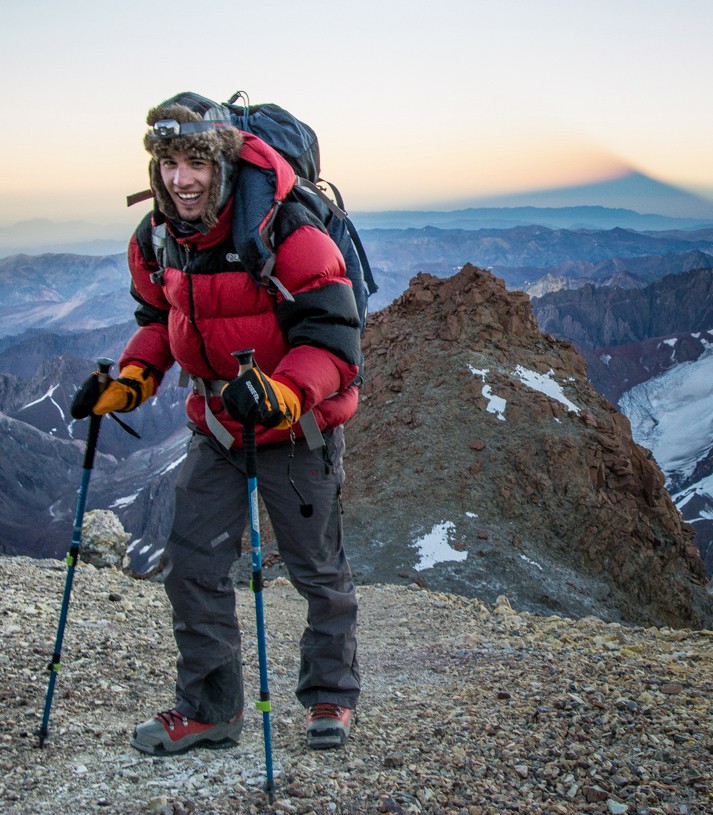
One point that always ends up disturbing is clothing and equipment, which I am not used to using; much more when we sit down to make numbers and realize that there is an increase in the original budget of the expedition. The clothing that is used to go to the mountains is not the same that we use in the city or in our daily life, and this has to do mainly with the environment (environment-place) but also with the activity to be carried out.
In Aconcagua we must have all the equipment that we can take to a mountain that can have all climates together. Normally the expedition is divided into two parts: the first is the trekking to the Plaza de Mulas base camp and the days of stay and acclimatization therein, and the second is the attack on the summit and the passage through the different camps of height, without the comfort that we can have at base camp.
Depending on whether we hire company guides or go without assistance, the general team can vary between adding to the team: high mountain tents, kitchen equipment with special heaters, pots, food and hiring mules and porters.
Personal equipment:
For footwear, we are going to base ourselves in principle on three types: trekking, resting and high mountain. The trekking is the one that we will use in almost all walks in the first stage. The resting footwear is the one we use, when we are in the tents, in the base camps. The high mountain one is used in almost all the marches above the base camp.
For clothing we are going to use the onion system, the layer system.
NOTE ON LAYERED CLOTHING: CLICK HERE
The backpack must be not less than 60 liters, for trekking or expedition trekking. Although there are portages with mules and porters (humans who transport equipment), each one must be as autonomous as possible and be able to carry their equipment; It is also important to have space to store clothes as we unravel.
NOTE ON BACKPACKS: CLICK HERE
High mountain sleeping bag, mat, headlamp, helmet, crampons, category 4 sunglasses , ski goggles, poles, are some of the other essential elements when embarking on the expedition.
5- Hydration and nutrition
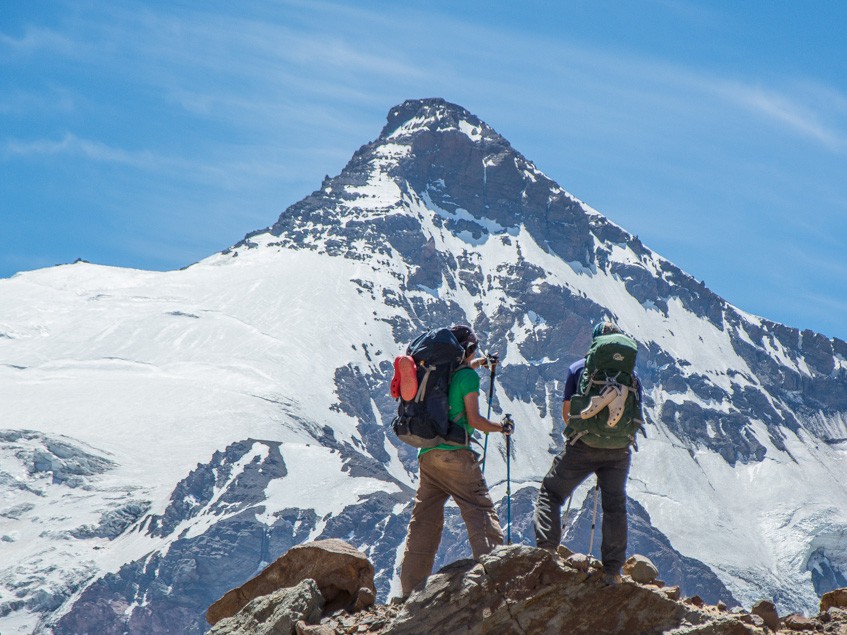 It is well known that at height, if you don´t drink a good amount of liquid, you´re gonna have a really bad experience. But you always have to emphasize it again. In the city or in our daily life outside the mountain environment where we can get to carry out some sports activity, we do not usually ingest much liquid although the recommended thing is not less than 2 to 3 liters depending on the body mass index (the ratio of height Weight). Above 3,000 masl the number increases and dehydration is more noticeable because fluid is lost through breathing twice as fast as at sea level. Being at height can also cause you to urinate more frequently and can weaken your thirst response (you don't usually feel thirsty, you must force yourself to drink), exposing you to an increased risk of dehydration. Then, without realizing it, they appear: headache, muscle cramps and dramatically increase the chances of frostbite, problems with solar radiation, hypothermia and acute mountain sickness.
It is well known that at height, if you don´t drink a good amount of liquid, you´re gonna have a really bad experience. But you always have to emphasize it again. In the city or in our daily life outside the mountain environment where we can get to carry out some sports activity, we do not usually ingest much liquid although the recommended thing is not less than 2 to 3 liters depending on the body mass index (the ratio of height Weight). Above 3,000 masl the number increases and dehydration is more noticeable because fluid is lost through breathing twice as fast as at sea level. Being at height can also cause you to urinate more frequently and can weaken your thirst response (you don't usually feel thirsty, you must force yourself to drink), exposing you to an increased risk of dehydration. Then, without realizing it, they appear: headache, muscle cramps and dramatically increase the chances of frostbite, problems with solar radiation, hypothermia and acute mountain sickness.
Above 4000 meters (height of Aconcagua base camp, Plaza de Mulas) it is convenient to drink between 3 and 4 liters of liquid to hydrate. This is very important since the water that comes from direct snow (melting snow) without aggregates does not hydrate enough. And above 5000 meters above sea level it is convenient to take between 4 and 5 liters a day.
Regarding the drinks and liquids that can help us to hydrate at height, it has been proven that cold tea is better than hot tea and that any of these is superior to mate (which generally adds liquid but does not hydrate) and coffee , instant soups are a good resource due to the proportion of sodium, fat, dehydrated vegetables, etc. Powdered isotonic drinks, powdered juices in sachets collaborate to have variety in daily consumption.
It is very important to have the right containers. For example, it is also good to have variety here, such as including a bag with a 2-liter hose, two large-mouth bottles, a 1-liter thermos and an airtight jug, for the different moments of the expedition and also to avoid mixing liquids. Always the juice that goes in one bottle, the water in another, the soup in the jug, the tea in the thermos, etc.
Feeding:
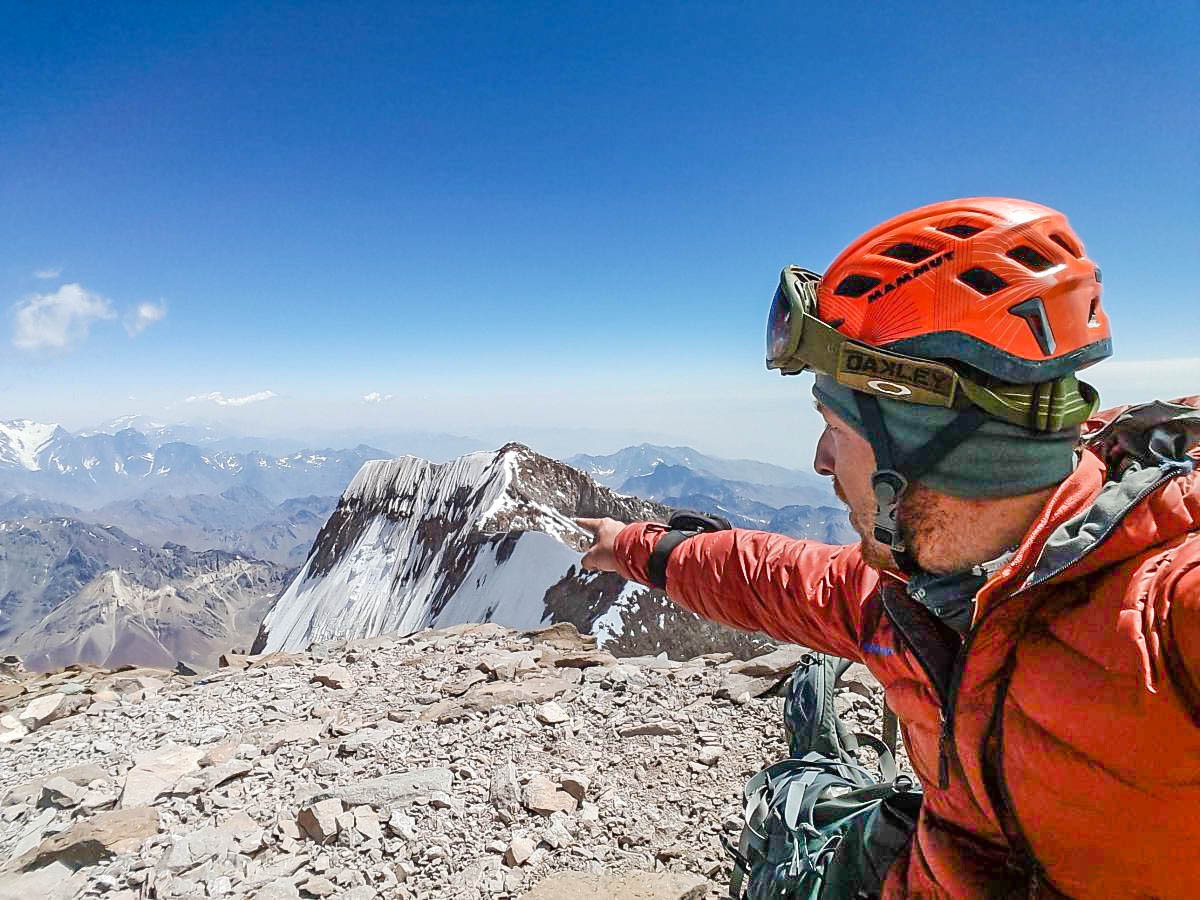 How many times have we heard that in the mountains you can only eat polenta, rice and noodles? However, developing culinary skills in natural settings represents one of the most rewarding tasks. The options are countless. In the same backpack we can even carry fresh products such as fruits, vegetables and even meat. The menus will have to do with the activity to be carried out, the place and the way of access. In the mountains we cannot afford, as some do, to eat absolutely nothing for breakfast. In the mountains, those who do not eat well return home. And here it does not come to the fore that the food must be rich in carbohydrates, rich in proteins, etc. In normal situations, being able to ingest some energy every two hours and make 4 meals a day and stay well hydrated is enough. You cannot and should not skimp on food. Our security also depends on it.
How many times have we heard that in the mountains you can only eat polenta, rice and noodles? However, developing culinary skills in natural settings represents one of the most rewarding tasks. The options are countless. In the same backpack we can even carry fresh products such as fruits, vegetables and even meat. The menus will have to do with the activity to be carried out, the place and the way of access. In the mountains we cannot afford, as some do, to eat absolutely nothing for breakfast. In the mountains, those who do not eat well return home. And here it does not come to the fore that the food must be rich in carbohydrates, rich in proteins, etc. In normal situations, being able to ingest some energy every two hours and make 4 meals a day and stay well hydrated is enough. You cannot and should not skimp on food. Our security also depends on it.
In Aconcagua and at altitude, a lack of appetite is usually another indicator that we have problems with acclimatization. That is why the variety of foods and nutrients to incorporate (proteins, fats, carbohydrates) is important. It is difficult to carry and keep fresh food such as meat and dairy for days, but it is very important to try to have them. Vegetables and fruits are another drawback so that they can be present in the second part of the expedition, but if proper maintenance is achieved, they can be regulated.
It is very important to know that those who have a diet that is regulated or decreased in variety, either by choice (vegetarians, vegans, etc.) or health (celiac, diabetes, etc.), must understand that at height everything is magnified and intensified. ; The calorie consumption up there is huge and therefore most of these people should have to incorporate obligatory protein supplements and this refers to obligatory consultation with nutritionists who are suitable for high altitude eating. The statistic of classic vegan people who have made it to the top is very low.
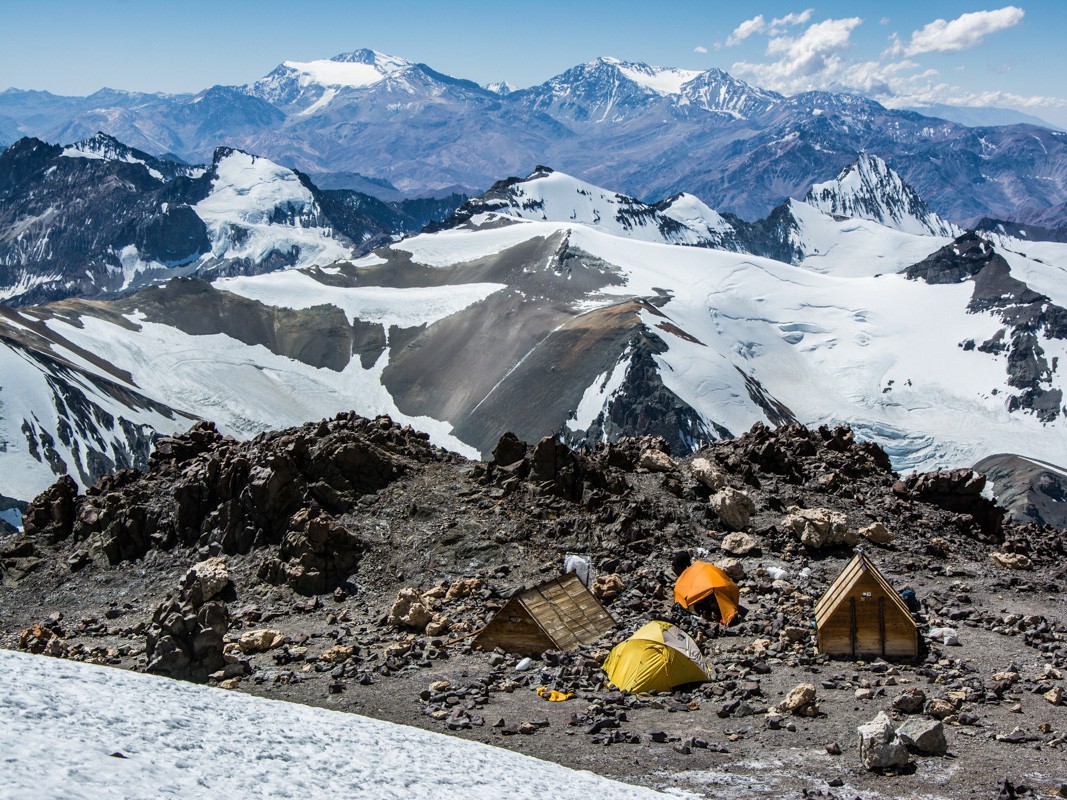 6- Height:
6- Height:
The word height brings us associated terms such as altitude sickness, acute mountain sickness (AMS), Soroche, apunamiento, puna, puna disease and so on. Certainly all associated to the word Hypoxia, which is neither more nor less than the lack of oxygen due to the altitude. The atmospheric pressure decreases with height, which affects the bioavailability of oxygen, since the pulmonary alveoli are not capable of transporting the same amount of oxygen to the blood as in a situation of higher pressure. Although hypoxia is known to be the cause of MAM, the exact mechanism by which it causes it is still unknown.
That is why when you suddenly drop off at the El Alto de La Paz airport (Bolivia) you immediately feel very agitated, and then headaches, or nausea or insomnia and many other symptoms that are part of this process called Evil of Mountain. In it there are several levels, the first symptoms, the means and the serious ones; when the worsts of the symptoms approach, we are close to being able to get the two most dangerous altitude diseases that are Pulmonary Edema or Cerebral Edema. Without delving into it, the summary indicates that in the mountain of altitude it is necessary to progress calmly, slowly and conscientiously. This means that you have to climb and sleep without making great efforts or unevenness; The recommended is usually not to exceed 700/800 meters of difference in height between camps. This can normally be accomplished in mountains that have these geographical possibilities and that the place, if protected, allows it. In Aconcagua there is only one interchange of camps that cannot comply with this rule, the section between Confluencia (3400 and first camp) and Plaza de Mulas (4400 and base camp), where 1000 meters of unevenness are overcome in an extensive walk also through the distance traveled.
Expeditions in Aconcagua usually do not last less than 15 days (ideal 18) mainly due to the acclimatization system that must be implemented. From Plaza de Mulas, the system to use to climb high altitude fields, be it Canada, Change of Slope, Nest of Condors, Berlin or Cholera, often ends up being very strategic. That is why companies often have different styles and shapes to face the final leg of the expedition.
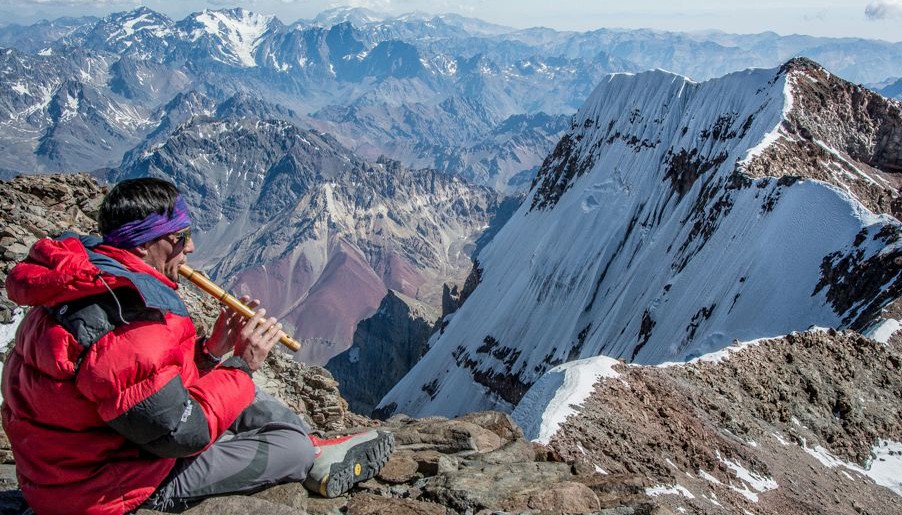 7- Knowing yourself, conviction + respect for the mountains and nature
7- Knowing yourself, conviction + respect for the mountains and nature
If I am not convinced of the activity, I do not carry it out, but if I have made the decision to carry it out, I do it with the necessary confidence and inner security. Intense mountain activities demand this attribute, which finally ends up being the essential discipline that is necessary to know yourself. To know my strengths, my weaknesses, my intentions, my enthusiasm, my integrity, my limits and, in the end, have the criteria and the courage to make important decisions, such as stop and returning on time.
Respect for the environment, the mountains and nature does not mean fear. The environment in which we move, has unique and unrepeatable conditions. Fear can paralyze me and leave me without strength to continue. Respect means that I can get an idea of ??the dimensions, magic and wisdom of the place. I am not going to show respect to anyone but myself. I respect the mountain that I am ascending when I contemplate it in its immensity and imagine myself inside it. I respect nature when I leave the place where I was better than how I found it. If I am going to lift my waste I can do it because someone imposes it on me or because I really convince myself that it would be good for whoever returns to this place to get excited in the same way. The orange peel is biodegradable but at the same time bio-disagreeable. Who wants to reach an impressive waterfall and see scattered shell?
8- Solo, autonomous group or hire guide / company?
The equation is simple. If you are someone who already has plenty of experience in going out to the mountains (many years in trekking, technical mountaineering and high-altitude mountaineering) you can easily go to Aconcagua without assistance or by hiring the assistance of local providers who provide you with amenities such as carpones, mules, baths, etc.
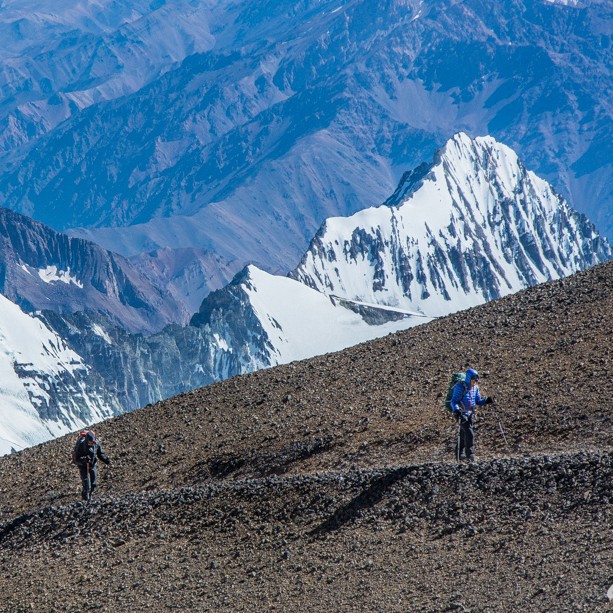 But if your situation is growth in the mountains, or you don´t have enough experience or you just need to prepare yourself with professionals to be able to arrive with the greatest number of possibilities, we will always recommend you to hire professional guides or, to a better extent, experienced companies and with enough prestige to be able to provide you with the best service and security you need.
But if your situation is growth in the mountains, or you don´t have enough experience or you just need to prepare yourself with professionals to be able to arrive with the greatest number of possibilities, we will always recommend you to hire professional guides or, to a better extent, experienced companies and with enough prestige to be able to provide you with the best service and security you need.
For beginners and those who dream of being able to make the dream come true without having to wait long, there are very interesting companies and projects that include a distance training system and progressive mountain excursions for 10 months, such as the Argentinos al Aconcagua Project.
If we see success in having a great experience and not in reaching the summit no matter how, then we will be on the right track. In short, the success of being able to reach the summit is never guaranteed, since in addition to everything I described in this text it is not enough if there are other unmanageable issues up there such as adverse weather or the simple refusal of our spirit, which It has designated for that moment of our life another outcome and, thus, it will allow us to return to the same wonderful setting to try again.
9- Would you like to receive more complete and advanced information about the Aconcagua Project that we propose from AEX?
In principle, we consider that it is very important that you tell us about your experience and what your objective is, so we can help you in a personalized way. Leave us your contact, and we´ll be sending you all the necessary information so that your dream of reaching the summit of Aconcagua is possible.